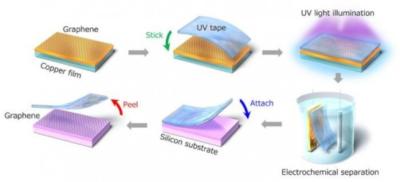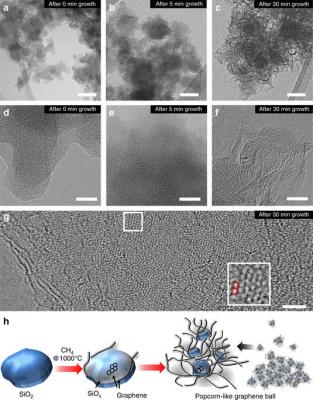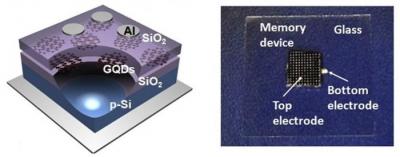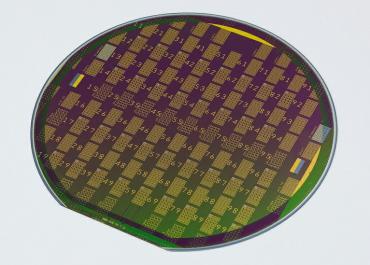Researchers develop adhesive tape that can transfer 2D materials like graphene in an easier, cheaper and less-damaging way
Researchers from Kyushu University, Nitto Denko Corporation, Tokyo Institute of Technology, Osaka University, National Institute of Advanced Industrial Science and Technology (AIST) and Samsung Electronics have developed a tape that can be used to stick 2D materials to many different surfaces, in an easy and user-friendly way.
Transfer process of monolayer graphene from Cu(111)/sapphire to a SiO2/Si substrate using the UV tape. Image from Nature Electronics
“Transferring 2D materials is typically a very technical and complex process; the material can easily tear, or become contaminated, which significantly degrades its unique properties,” says lead author, Professor Hiroki Ago of Kyushu University's Global Innovation Center. “Our tape offers a quick and simple alternative, and reduces damage.”






